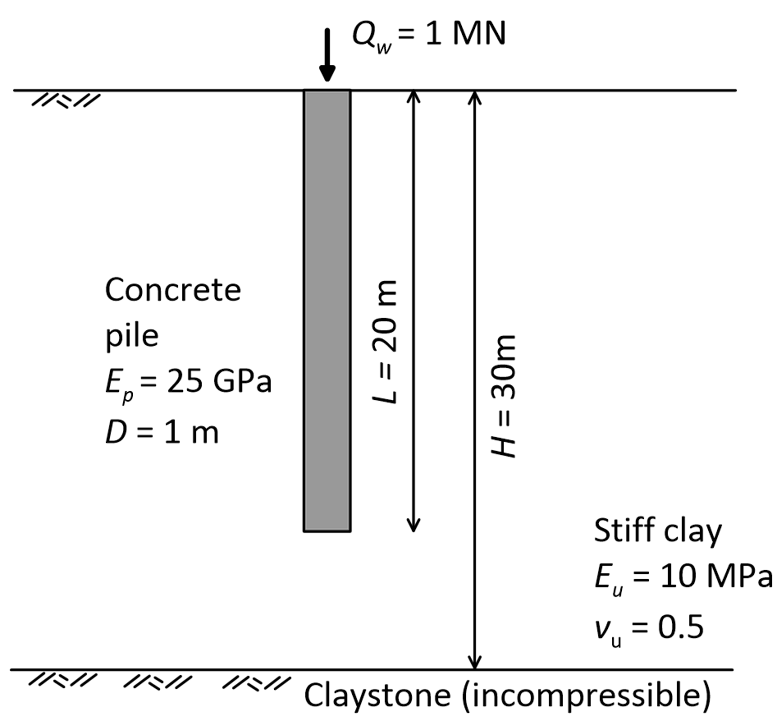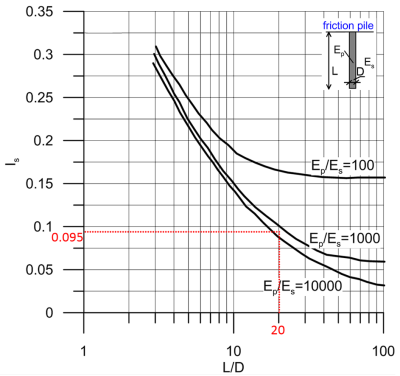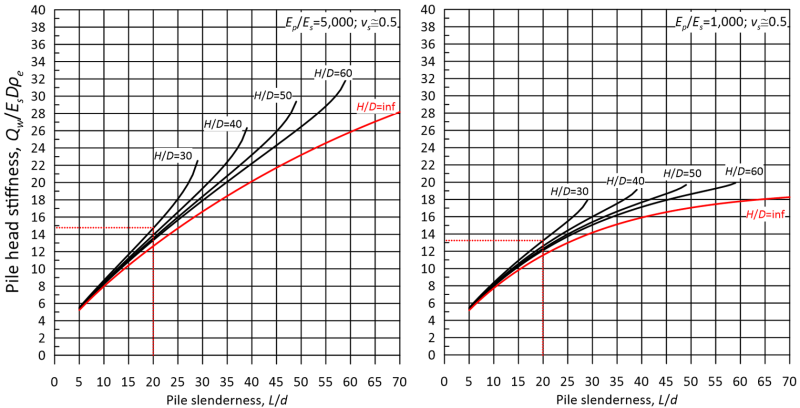Example 6.8
Calculation of settlement of a friction pile in homogeneous soil
Calculate the immediate settlement of the driven solid concrete pile shown in the figure below, using i) the method of Poulos (1998) for friction piles in infinitely deep soil and ii) the method of Zheng et al. (2023) for friction piles in a soil layer of finite thickness.

Answer:
1. Calculation of settlement according to Poulos (1998):
First, we estimate the pile head stiffness factor Is from Figure 6.66. For Kp = Ep/Es (solid pile) = 25,000/10 = 2500 and L/D = 20 it is Is ≈ 0.095 (see Figure below).

Thus, from Eq. 6.92 it is:
![]()
2. Calculation of settlement according to Zheng et al. (2023):
We estimate the pile head stiffness from Figure 6.70, which presents results for vs = 0.5. For Kp = Ep/Es (solid pile) = 5000, H/D = 30 and L/D = 20 it is Qw/EsDρe ≈ 14.8 while for K = Ep/Es = 1000, H/D = 30 and L/D = 20 it is Qw/EsDρe ≈ 13.2 (see Figure below).

Using linear interpolation we can obtain:


![]()
Therefore the settlement ρe is:
![]()
i.e., as expected, lower than that calculated using the method of Poulos because the method of Zheng et al. accounts for the actual thickness of the soil layer.

